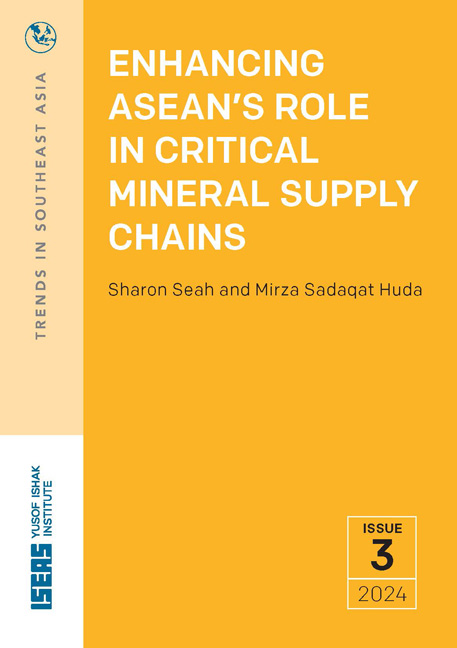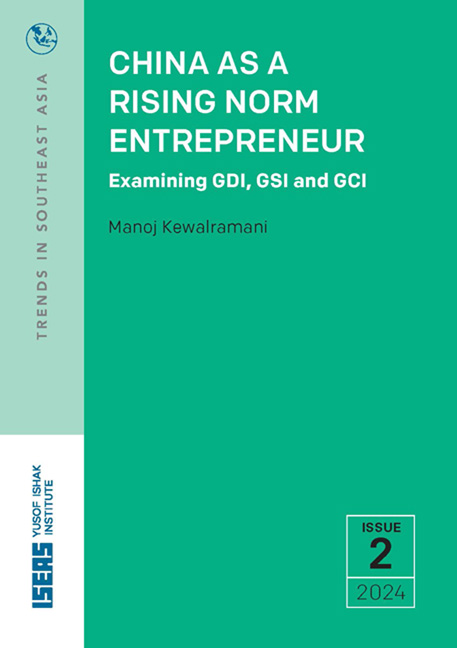14287 results in Political economy
Index
-
- Book:
- Behavioural Economics and Policy for Pandemics
- Published online:
- 31 January 2025
- Print publication:
- 02 May 2024, pp 420-425
-
- Chapter
- Export citation
18 - Can Behavioural Insights Explain Ethnic Minority Vaccination Gaps?
- from Part II - Health Behaviours and Policies during Covid-19
-
-
- Book:
- Behavioural Economics and Policy for Pandemics
- Published online:
- 31 January 2025
- Print publication:
- 02 May 2024, pp 335-347
-
- Chapter
- Export citation
3 - The Political Economy of CBI
- from Part I - The Theoretical Foundations
-
- Book:
- Reconsidering Central Bank Independence
- Published online:
- 25 April 2024
- Print publication:
- 02 May 2024, pp 38-70
-
- Chapter
- Export citation

Class, Politics, and Agrarian Policies in Post-liberalisation India
-
- Published online:
- 30 April 2024
- Print publication:
- 21 November 2024

Survival of the Greenest
- Economic Transformation in a Climate-conscious World
-
- Published online:
- 27 April 2024
- Print publication:
- 16 May 2024
-
- Element
-
- You have access
- Open access
- HTML
- Export citation

Robust Governance in Turbulent Times
-
- Published online:
- 26 April 2024
- Print publication:
- 16 May 2024
-
- Element
-
- You have access
- Open access
- HTML
- Export citation

Reconsidering Central Bank Independence
-
- Published online:
- 25 April 2024
- Print publication:
- 02 May 2024

Agents of Empire
- English Imperial Governance and the Making of American Political Institutions
-
- Published online:
- 25 April 2024
- Print publication:
- 02 May 2024

Designing Behavioural Insights for Policy
- Processes, Capacities & Institutions
-
- Published online:
- 24 April 2024
- Print publication:
- 16 May 2024
-
- Element
- Export citation

Enhancing ASEAN's Role in Critical Mineral Supply Chains
-
- Published by:
- ISEAS–Yusof Ishak Institute
- Published online:
- 17 April 2024
- Print publication:
- 08 February 2024

China as a Rising Norm Entrepreneur
- Examining GDI, GSI and GCI
-
- Published by:
- ISEAS–Yusof Ishak Institute
- Published online:
- 16 April 2024
- Print publication:
- 15 January 2024

Knowledge and Global Inequality Since 1800
- Interrogating the Present as History
-
- Published online:
- 11 April 2024
- Print publication:
- 09 May 2024
-
- Element
-
- You have access
- Open access
- HTML
- Export citation
Maps
-
- Book:
- The Price of Empire
- Published online:
- 28 March 2024
- Print publication:
- 04 April 2024, pp xi-xii
-
- Chapter
- Export citation
Bibliography
-
- Book:
- The Price of Empire
- Published online:
- 28 March 2024
- Print publication:
- 04 April 2024, pp 167-186
-
- Chapter
- Export citation
4 - Sugar and Paradise
-
- Book:
- The Price of Empire
- Published online:
- 28 March 2024
- Print publication:
- 04 April 2024, pp 98-123
-
- Chapter
- Export citation
Conclusion
-
- Book:
- The Price of Empire
- Published online:
- 28 March 2024
- Print publication:
- 04 April 2024, pp 151-166
-
- Chapter
- Export citation
Tables
-
- Book:
- The Price of Empire
- Published online:
- 28 March 2024
- Print publication:
- 04 April 2024, pp xiii-xiv
-
- Chapter
- Export citation
Dedication
-
- Book:
- The Price of Empire
- Published online:
- 28 March 2024
- Print publication:
- 04 April 2024, pp v-vi
-
- Chapter
- Export citation
Copyright page
-
- Book:
- The Price of Empire
- Published online:
- 28 March 2024
- Print publication:
- 04 April 2024, pp iv-iv
-
- Chapter
- Export citation
2 - Birds and Bases
-
- Book:
- The Price of Empire
- Published online:
- 28 March 2024
- Print publication:
- 04 April 2024, pp 47-71
-
- Chapter
- Export citation

